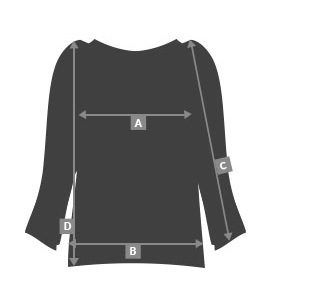LINGERI Dress Pattern 2
Specification



| Size | Bust | Belt | Hips | Sleeve length | Biceps | Overall length |
|---|---|---|---|---|---|---|
| Size38 | Bust86 cm | Belt76 cm | Hips102 cm | Sleeve length62 cm | Biceps 50 cm | Overall length122 cm |
| Size40 | Bust92 cm | Belt82 cm | Hips106 cm | Sleeve length62 cm | Biceps 50 cm | Overall length122 cm |
| Size42 | Bust96 cm | Belt86 cm | Hips108 cm | Sleeve length62 cm | Biceps 50 cm | Overall length122 cm |
| Size44 | Bust100 cm | Belt88 cm | Hips110 cm | Sleeve length62 cm | Biceps 52 cm | Overall length125 cm |
| Size46 | Bust104 cm | Belt94 cm | Hips114 cm | Sleeve length62 cm | Biceps 52 cm | Overall length125 cm |
| Size48 | Bust110 cm | Belt100 cm | Hips120 cm | Sleeve length62 cm | Biceps 52 cm | Overall length125 cm |
| Size50 | Bust114 cm | Belt104 cm | Hips124 cm | Sleeve length62 cm | Biceps 58 cm | Overall length127 cm |
HOW WE MEASURE CLOTHES
1. We measure each garment flat without stretching, then multiply times two (e.g. item A from armpit to armpit is 60 cm x 2 = 120 cm and such a value will appear in the table).
2. If the material is elastic we specify the range (e.g. A from armpit to armpit is 60 cm, after stretching it is 67 cm, so in the table will appear a range of 120-134 cm, that is, the dimension before the dash is the measurement flat without stretching, after the dash is the dimension after stretching).
2. To best fit the size, it is best to measure your own garment in the same way as shown in the picture and described above. :)
3. If you find in the size information, for example, 44/48, it means that the garment comes in a universal size and fits people in the given dimensions.
4. If the overall length has 2 values(e.g. D 75/91), it means that the first is the length in the front, and the second is the length in the back.
5. The tolerance is 1-2 cm.








